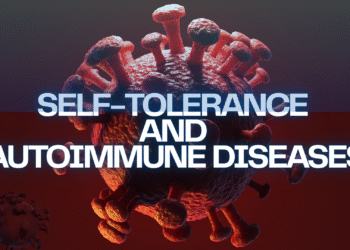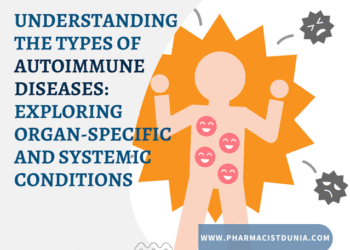Embark on a journey into the intricate realm of migraines, where each subtype unravels its own enigmatic tapestry of symptoms. Explore the diverse classifications, from common migraines to rare variants like hemiplegic and retinal migraines. Uncover personalized strategies that can help you reclaim control and find respite from the torment of migraines.
Decoding the Migraine Mosaic: Exploring the Classification and Diversity of Migraine Subtypes
Discover the diverse world of migraines through comprehensive classification. From common migraines to hemiplegic and retinal migraines, explore the different subtypes and their unique symptoms. Gain insights into personalized treatment approaches for effective management. Take control of your migraines and find relief today.
Migraine
Migraine, a complex neurological condition, encompasses various subtypes that exhibit distinct symptoms, durations, and associated features. Accurate classification of migraines plays a pivotal role in understanding the diverse spectrum of this condition and guiding appropriate treatment strategies. The International Classification of Headache Disorders (ICHD) provides a widely accepted framework for categorizing migraines based on specific criteria. By examining the classification of migraines, healthcare professionals gain valuable insights into the underlying characteristics and patterns of this condition, enabling them to deliver personalized care to individuals suffering from migraines. This comprehensive understanding of migraine subtypes empowers clinicians to tailor interventions, medications, and lifestyle modifications to effectively manage and alleviate the burden of migraines in patients’ lives.
Classification of Migraine
Let’s explore the classification of migraines based on the ICHD criteria:
1. Migraine without Aura (formerly known as Common Migraine):
– Sudden onset of moderate to severe headache, usually on one side of the head.
– Absence of neurological warning signs (aura) before the headache.
– Accompanying symptoms may include nausea, vomiting, sensitivity to light and sound, and fatigue.
– Typically lasts for 4 to 72 hours if left untreated.
2. Migraine with Aura (formerly known as Classic Migraine):
– Preceded by specific neurological symptoms called aura, which act as warning signs prior to the headache phase.
– Aura symptoms may include visual disturbances (flashing lights, blind spots), sensory changes, speech difficulties, and motor weakness.
– Aura typically lasts for about 5 to 60 minutes, followed by the headache phase.
– The headache characteristics are similar to those of migraine without aura.
3. Hemiplegic Migraine:
– Characterized by temporary paralysis or weakness (hemiplegia) on one side of the body, often accompanied by other neurological symptoms.
– May include visual disturbances, speech difficulties, sensory changes, and confusion.
– Headache typically follows the aura phase, resembling either migraine without aura or migraine with aura.
4. Retinal Migraine:
– Rare subtype characterized by repeated attacks of monocular (one eye) visual disturbances or temporary vision loss.
– The vision loss usually lasts for less than an hour and affects one eye only.
– Headache may or may not be present during retinal migraine attacks.
5. Chronic Migraine:
– Diagnosed when an individual experiences migraines on 15 or more days per month for at least three months.
– At least eight of these migraine days should fulfill the criteria for migraine with or without aura.
– Chronic migraines require specialized management strategies due to their frequent and persistent nature.
6. Menstrual Migraine:
– Occurs in a pattern related to the hormonal fluctuations of the menstrual cycle.
– Migraine attacks typically coincide with or closely follow menstruation.
– Symptoms and triggers may vary, but hormonal changes play a significant role.
7. Vestibular Migraine:
– Characterized by recurring episodes of vertigo, dizziness, and problems with balance.
– These symptoms can occur with or without a headache.
– Sensitivity to motion, light, or sound may also be present.
8. Chronic Migraine with Medication Overuse:
– This subtype occurs when a person experiences chronic migraines (15 or more headache days per month) and overuses acute headache medications, such as triptans or analgesics, for an extended period.
– Medication overuse can lead to a cycle of frequent headaches, making it challenging to differentiate between medication-induced headaches and underlying migraines.
9. Status Migrainosus:
– This is a severe and prolonged migraine attack that lasts for more than 72 hours or even several days.
– Status migrainosus can cause significant distress and may require medical intervention to alleviate symptoms and prevent complications.
10. Probable Migraine:
– This classification is used when migraine-like symptoms are present but do not fully meet the diagnostic criteria for a specific migraine subtype.
– It may be used for cases where there is uncertainty or incomplete information about the presentation of the headache disorder.
The classification of migraines serves as a crucial tool in comprehending the diverse manifestations of this neurological disorder. By categorizing migraines into distinct subtypes, healthcare professionals can better identify and diagnose specific presentations, leading to more targeted treatment approaches. From common migraines to classic migraines, hemiplegic migraines, and various other subtypes, each form of migraine carries unique features and associated symptoms. This classification system aids in guiding clinicians toward tailored treatment plans, encompassing acute interventions, preventive measures, lifestyle modifications, and behavioral therapies. As our understanding of migraines continues to evolve, ongoing research and refinement of the classification system will enhance our ability to provide effective management strategies and improved quality of life for individuals living with migraines. By recognizing and addressing the intricacies of each migraine subtype, healthcare professionals can make significant strides in alleviating the burden and providing relief to those affected by this debilitating condition.
It’s important to note that accurate diagnosis and classification of migraines require a thorough evaluation by a healthcare professional or headache specialist. They consider various factors, including the pattern and characteristics of headaches, associated symptoms, medical history, and response to treatments, to determine the most appropriate subtype.
Additionally, understanding the specific subtype of migraine can guide treatment decisions, including the use of acute medications, preventive measures, lifestyle modifications, and behavioral therapies tailored to address the unique features of each migraine subtype.
Remember that migraines can vary from person to person, and it is essential to consult with a healthcare professional for a proper evaluation and personalized management plan.
It’s important to note that the classification and terminology of migraines may evolve as new research emerges. Consulting a healthcare professional or headache specialist is crucial for accurate diagnosis, as they can evaluate individual symptoms and provide tailored treatment plans for specific migraine subtypes.














